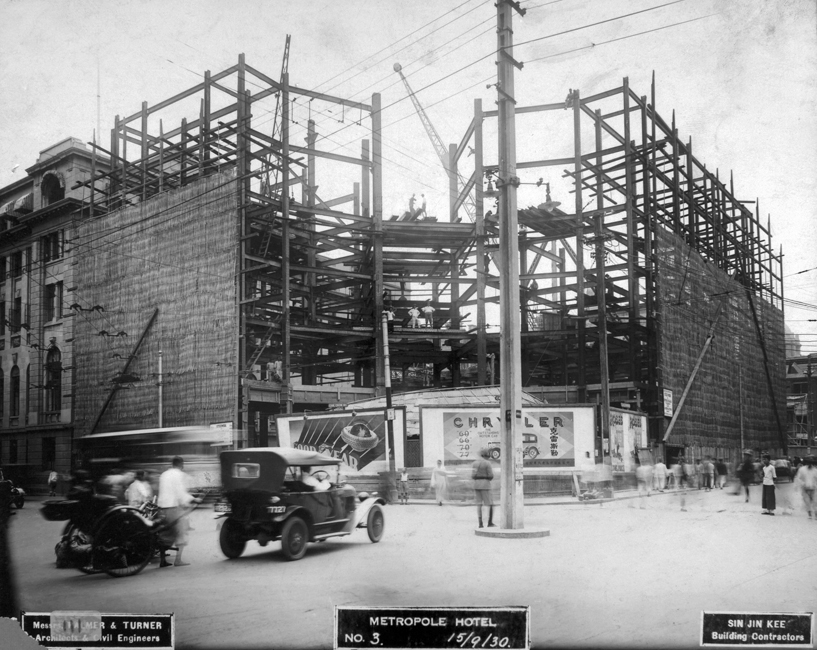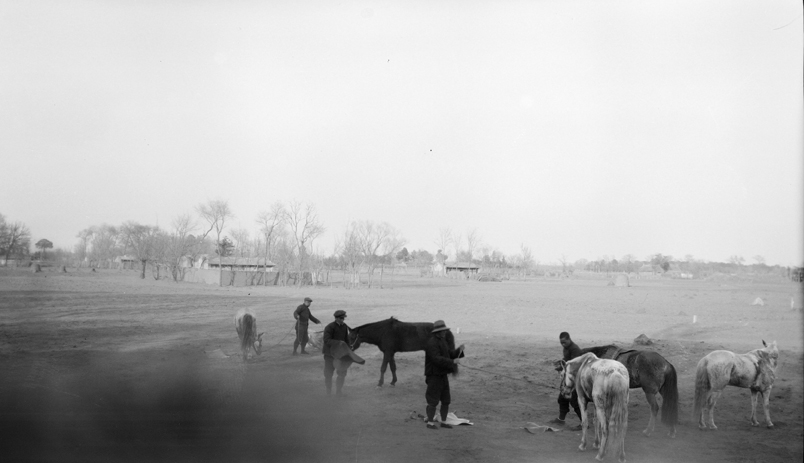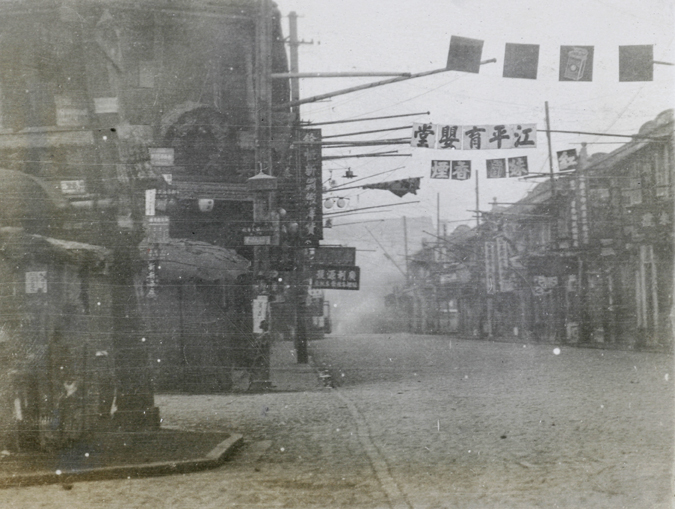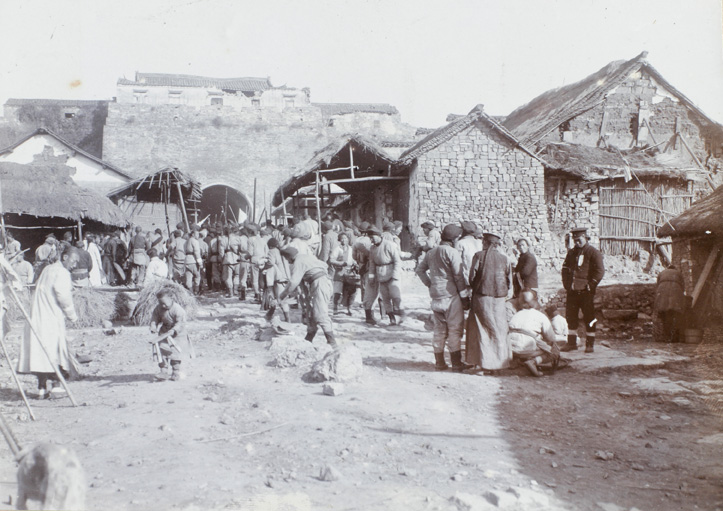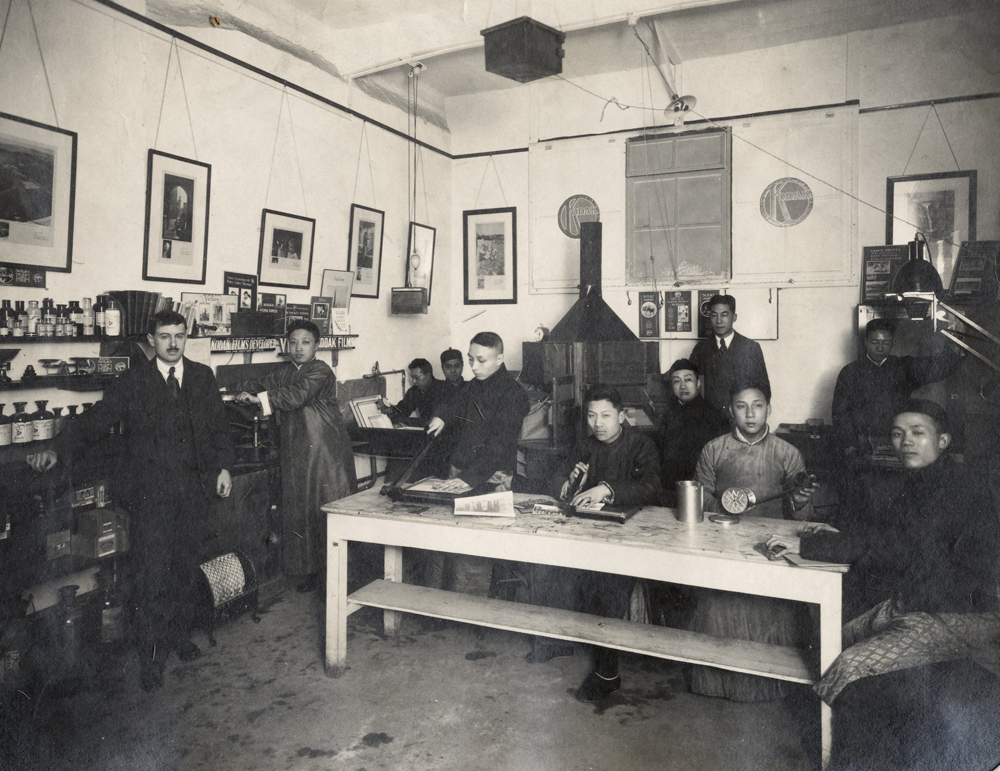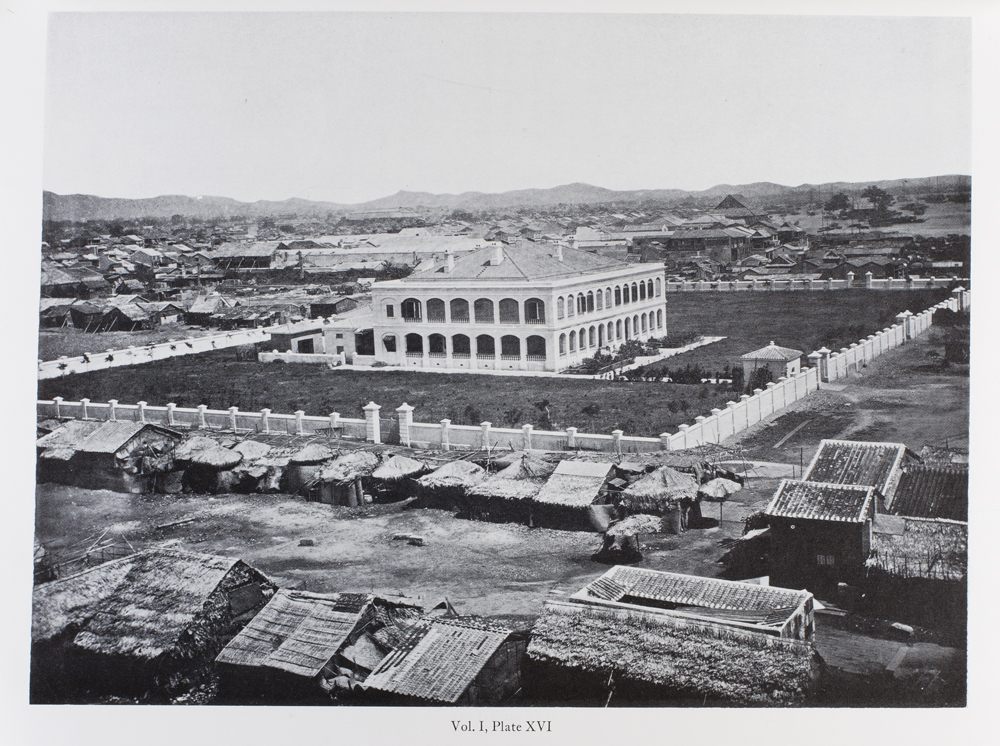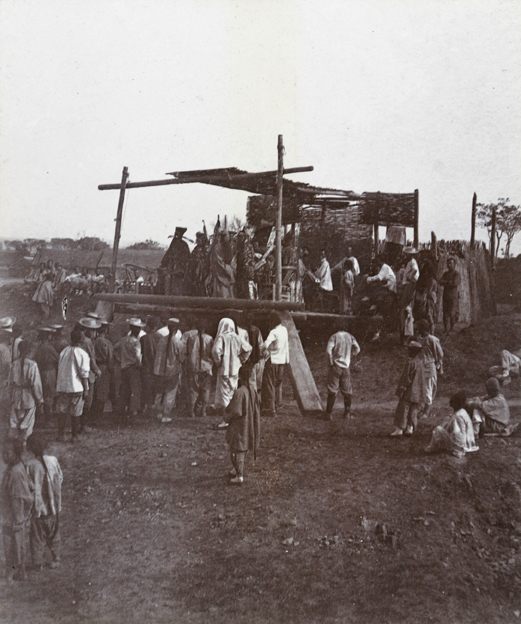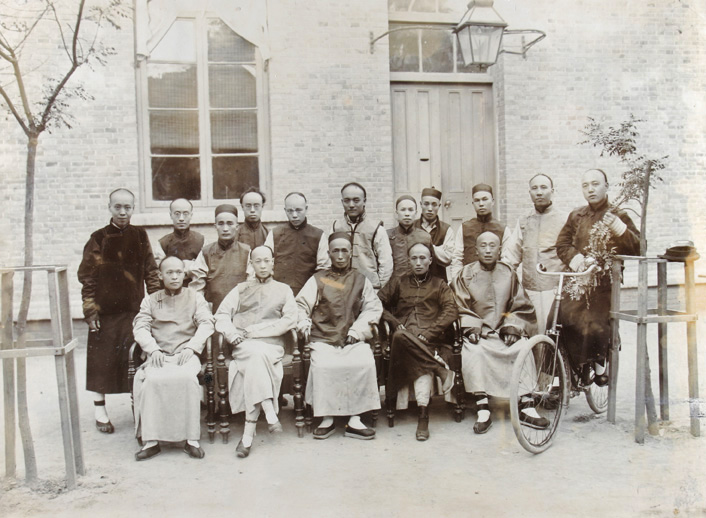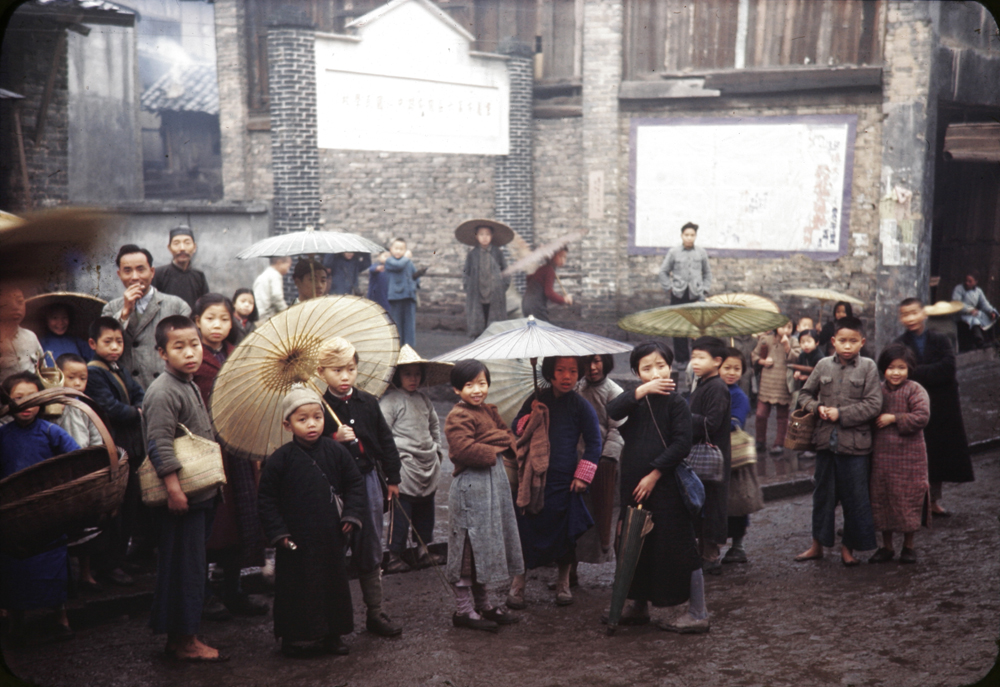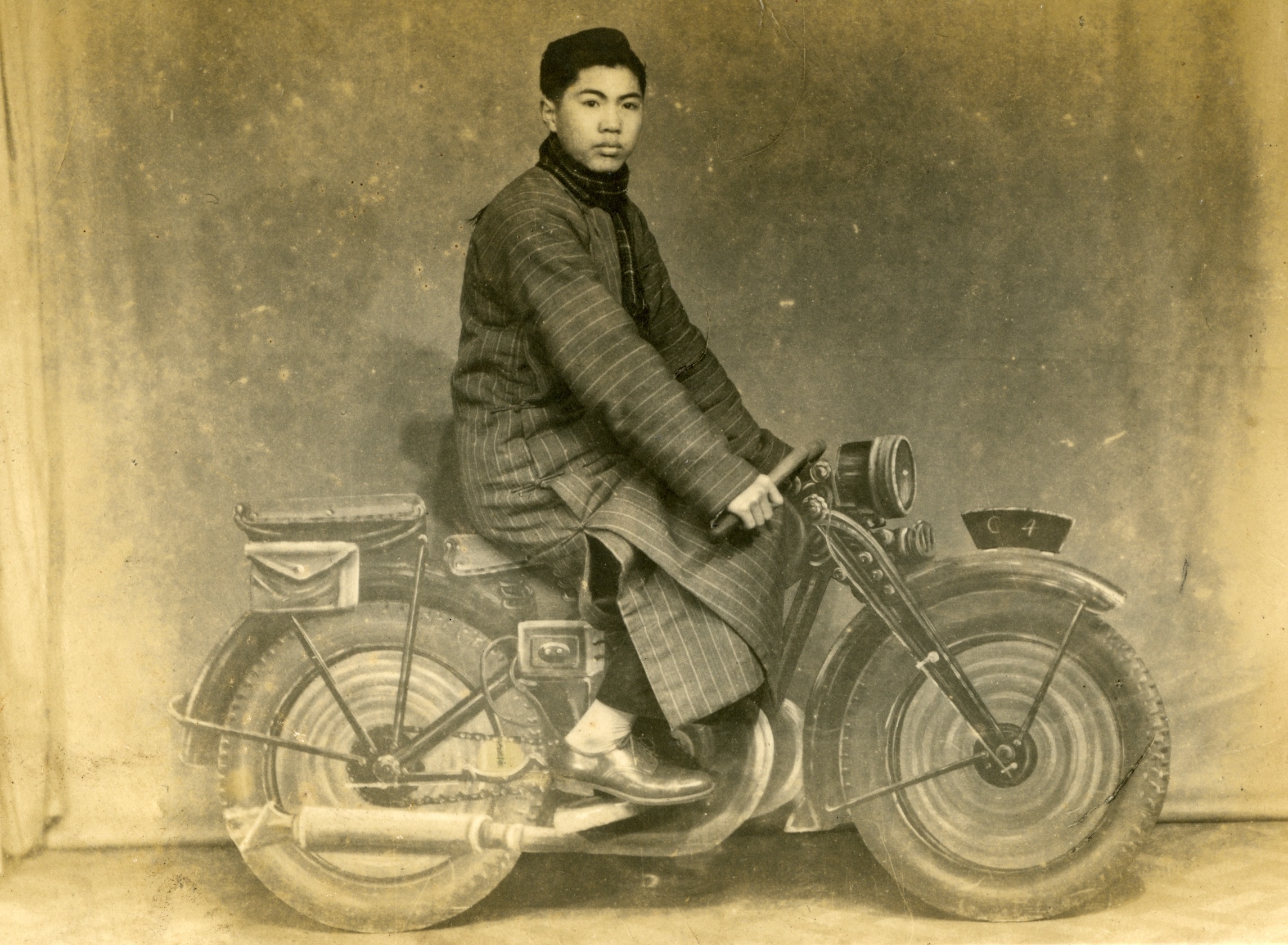This photograph (BS-s11) of the Metropole Hotel under construction, is from the British Steel Archive Project, in Teesside, from whence came the girders for the building’s steel frame. The Metropole was designed by Palmer and Turner, and was built on a crossroads opposite its twin sister Hamilton House. Both of these tall, striking and angular, Art Deco, edifices still stand, although the Hamilton House apartments are now offices. The more classic and sober Shanghai Municipal Council (by R.C. Turner) is just across the junction.
The architectural firm, Palmer and Turner, designed several of Shanghai’s public buildings in the 1920s and 1930s, including Sassoon House (Cathay Hotel, now Peace Hotel), Custom House, the Hongkong and Shanghai Banking Corporation building, as well as other showcase structures along the Bund (Wai Tan). The Bund became ‘one of the most striking and beautiful civic entrances in the world’ (Source: All About Shanghai and Environs, University Press, Shanghai, 1934) – China’s Western, international, face.
The image also shows a Sikh policeman on points duty (holding up a car, a rickshaw and pedestrians), adverts for Goodyear tyres and Chrysler cars, and the blur of a tram trundling along the Kiangse Road (Jiangxi Zhonglu).

